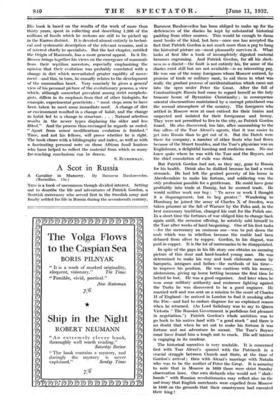' The Rise of Mammals
Dn. Bnoom is among the foremost living palaeontologists. In particular he is one of the world's greatest authorities on the question of the evolutionary emergence of mammals front the reptiles of the Middle Permian and Upper. Triassic geologi- cal epochs, a period of the earth's history so far back, that mere statements in terms of millions of years fail altogether to impress the imagination with the length of time that has elapsed since the Creatures with whose skeletal structure Dr. Broom is so familiar roamed over the plains of South Africa. . His hrsii is based on the results of the work of more than thirty years, spent in collecting and describing 1,200 of the millions of fossils which he reckons are still to be picked up in the Karroo district. It is devoted almost entirely to techni- cal and systematic description of the relevant remains, and is of interest chiefly to specialists. But the last chapter, entitled the Origin of Mammals, has a more general appeal. In it Dr. Broom brings together his views on the emergence of mammals from their reptilian ancestors, especially emphasizing the opinion that their evolution was probably correlated with a change in diet which necessitated greater rapidity of move- ment—and this, in turn, he causally relates to the development of the mammalian heart. Very concisely he gives a general view of his personal picture of the evolutionary process, a view which, although somewhat prevalent among strict morpholo- gists, differs in its emphasis from that of other biologists, for example, experimental geneticists "most steps seem to have been taken to meet some immediate need. A change of diet or environment resulted in a change of habit, and the change in habit led to a change in structure. . . . Natural selection results in the newer types displacing the older and less fitted." And the process thus envisaged he regards as ended. "Apart from minor modifications evolution is finished." Time, and not his fellows, will prove whether he is right. The book closes with a bibliography and index, as well as with a fascinating personal note on those African fossil hunters who have helped to collect the material from which so many far-reaching conclusions can be drawn.
S. ZUCIMEDIA-N.



































 Previous page
Previous page